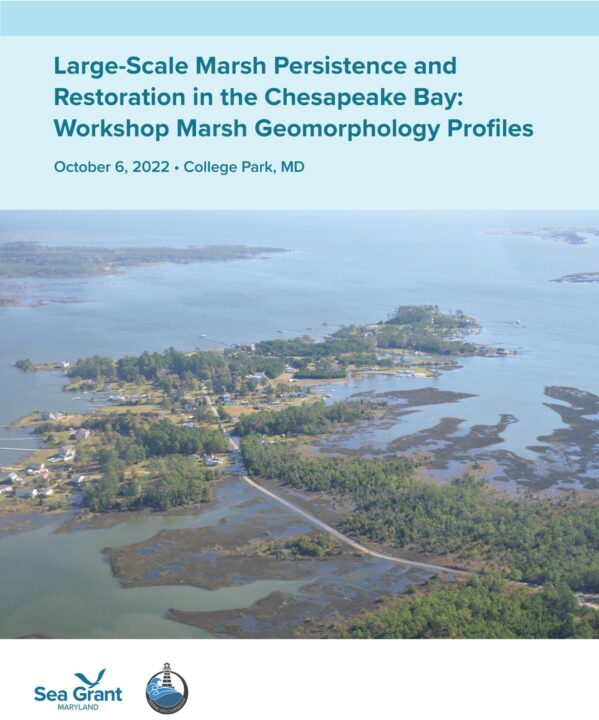Abstract or Summary

At the “Large-Scale Marsh Persistence and Restoration in the Chesapeake Bay” workshop on October 6, 2022, participants were asked to assess how different marsh geomorphologies may best support varied ecosystem services (Session I) and then how to manage a particular marsh geomorphology into the future (Session II). Their comments and rankings were based on their own expertise and experience. The workshop steering committee designated the ecosystem services and the marsh geomorphologies along with definitions and characteristics for each service/type in the workshop briefing materials (see Briefing Materials for ecosystem service and marsh geomorphology definitions). In Session I, participants were placed in breakout groups (5-10 people/group) that represented an ecosystem service based on their preferences in the workshop registration/pre-survey (Appendix A). The steering committee designated eight ecosystem services during the registration/pre-survey; because of low interest in the “water purification” ecosystem service in the pre-survey, we did not assign a group to it during the workshop (though several groups mentioned water quality in their discussions) (See Briefing Materials). Based on interest levels in the registration/pre-survey, some ecosystem system services had more than one group assigned to them. The groups were given 45 minutes to evaluate seven geomorphologies (or approximately 6 minutes per geomorphology) and ultimately provide a ranking of whether each geomorphology was a high, medium, or low priority for protection or restoration for their assigned ecosystem service (Table 1). Some groups were not able to evaluate all geomorphologies in the assigned time. While we asked groups to focus on their specific ecosystem service, participants also considered and discussed the distribution of these geomorphologies in the Chesapeake and coastal bays, the potential longevity of the marsh with or without intervention, and the ease of implementing restoration. While these topics are fully appropriate in considering investment in a marsh’s conservation, they may not speak specifically to advantages or weaknesses toward the assigned ecosystem service. In Session II, groups were asked to consider current vulnerabilities of a specific marsh geomorphology and best management strategies to sustain marsh goals, based on the ecosystem service priorities of the previous breakout session. Some geomorphologies had more than one group assigned to the assessment. To aid in their thinking about how to manage a for a geomorphology we also provided an example of each geomorphology located in the Chesapeake Bay (see Appendix B). Based on background research for the Briefing Materials and the feedback from participants during Sessions I and II, Maryland Sea Grant has developed a summary for each marsh geomorphology that includes their capacity to provide specific ecosystem services, recommended restoration techniques and associated concerns, and remaining uncertainties regarding the marsh’s ecology and/or management. These summaries are based on expert consensus among the workshop participants, acknowledging that participants had limited time to draw conclusions, expertise varied within groups, and summaries were drawn from workshop notes (i.e., points and nuances may not have been fully captured). We hope these brief profiles for marsh geomorphologies may serve as a starting point to describe their assets, challenges to their persistence, and recommended restoration strategies for their on going management. This may aid in evaluating a site for possible conservation in terms of potential co-benefits and management of stressors.